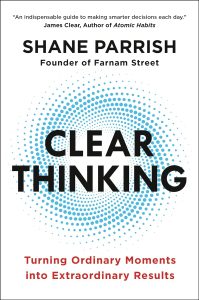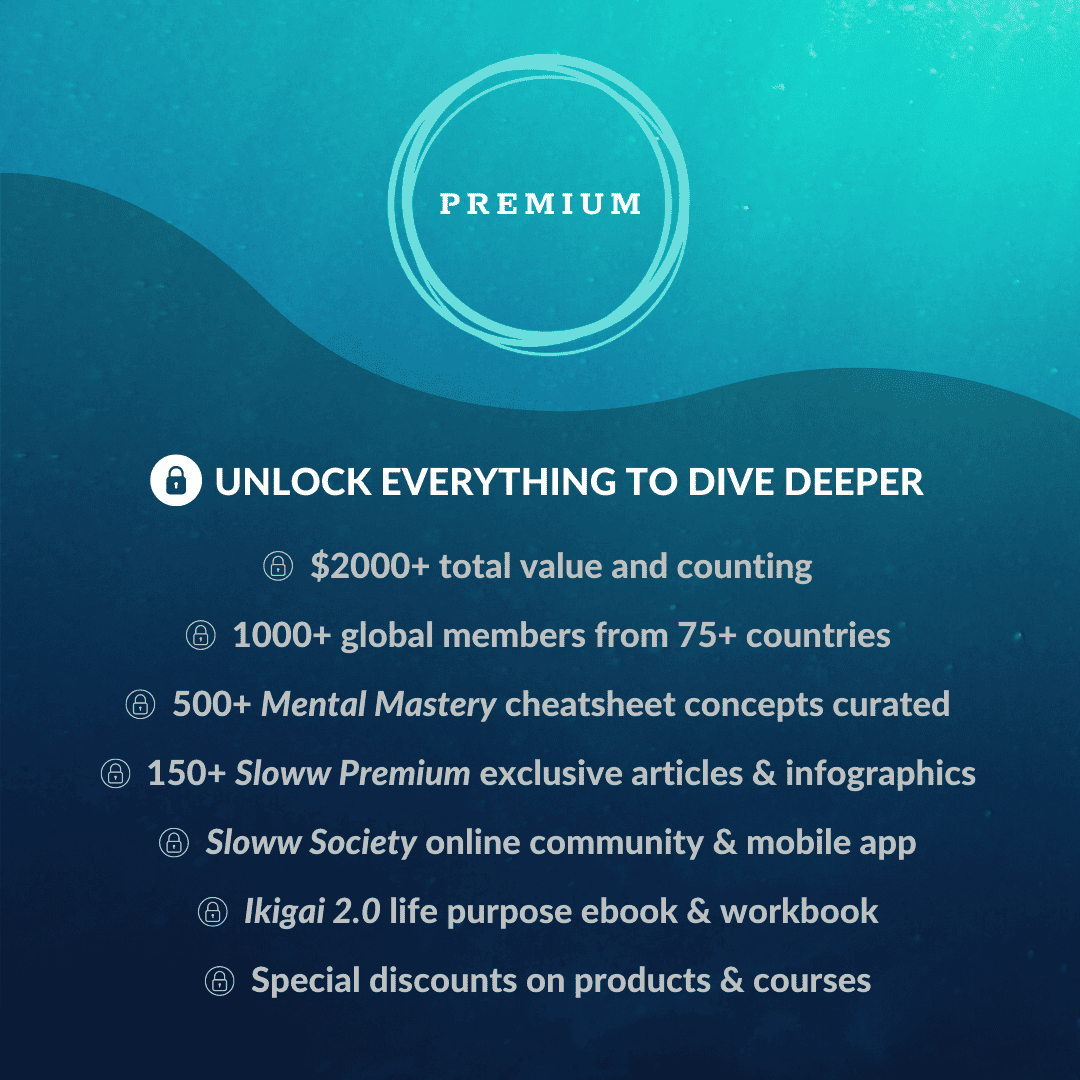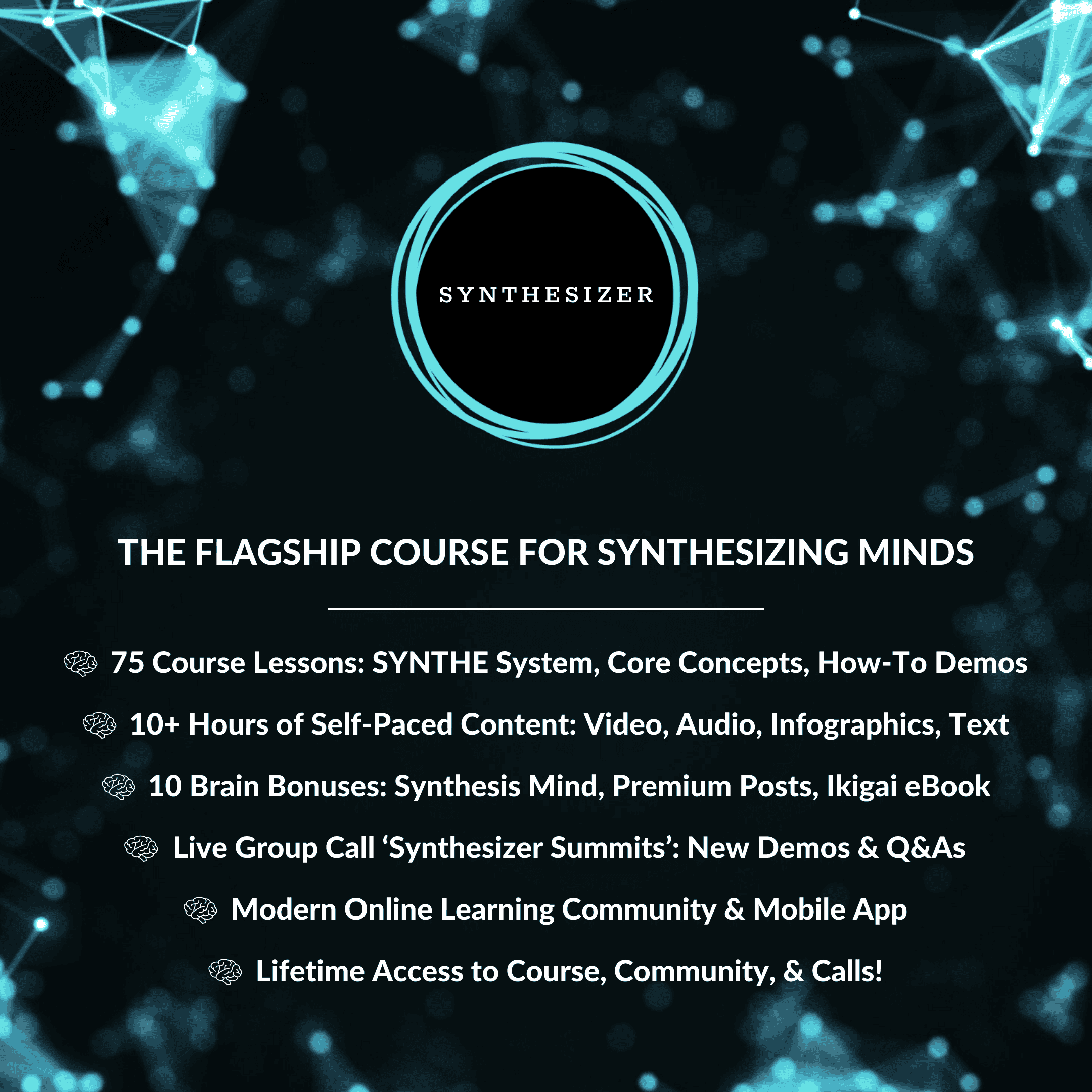This is a book summary of Clear Thinking: Turning Ordinary Moments into Extraordinary Results by Shane Parrish of Farnam Street (Amazon).
Here’s a short video from Shane Parrish introducing the book Clear Thinking:
Quick Housekeeping:
- All content in “quotation marks” is from the author (otherwise it’s paraphrased).
- All content is organized into my own themes (not the author’s chapters).
- Emphasis has been added in bold for readability/skimmability.
Book Summary Contents:
- About the Book
- Defaults, Positioning, & Environment
- Strengths & Weaknesses
- Decision-Making Process (5 Steps & 15 Principles)
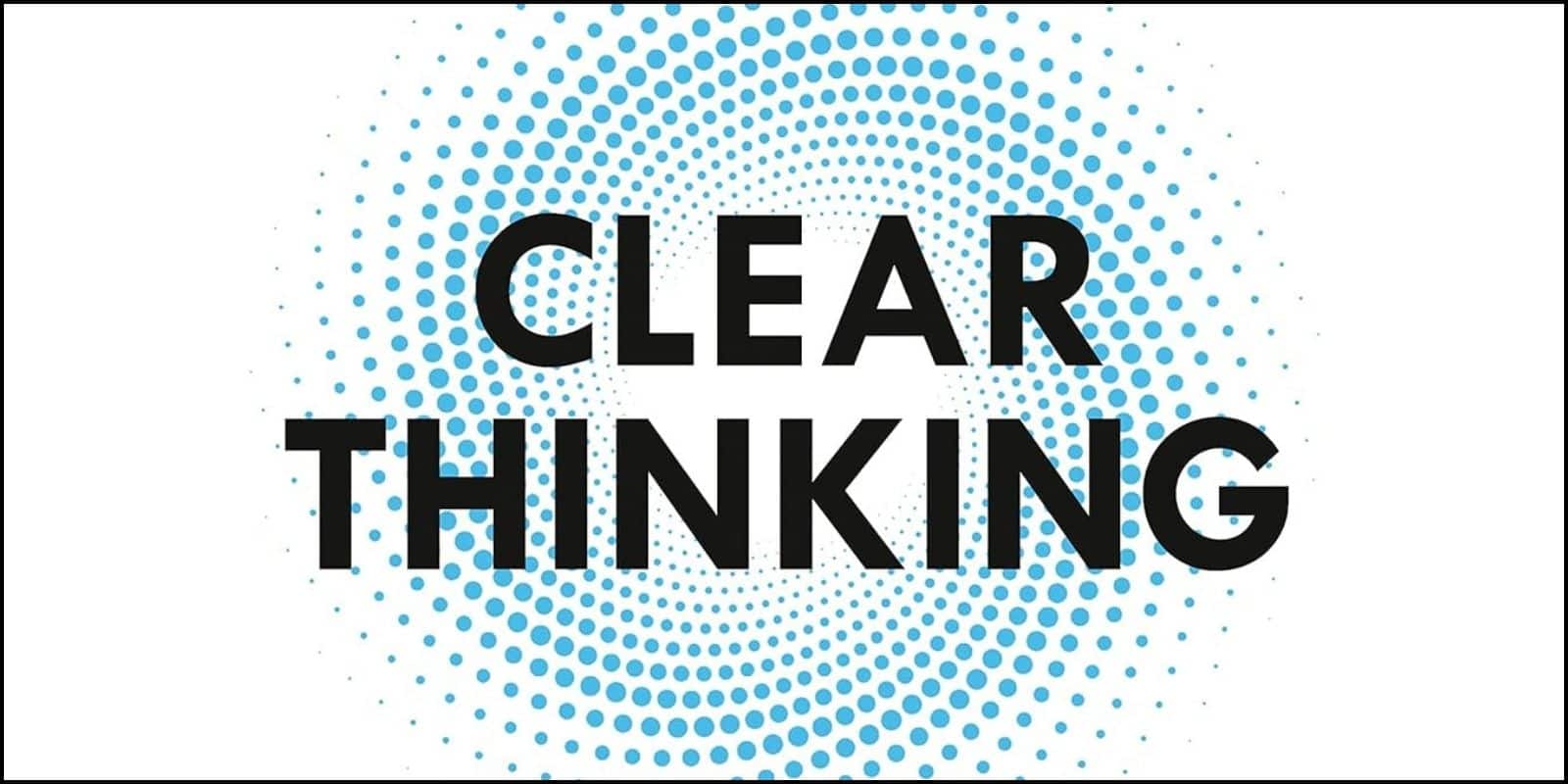
Ordinary Moments into Extraordinary Results: Clear Thinking by Shane Parrish (Book Summary)
About the book Clear Thinking
“If you’re like me, no one ever taught you how to think or make decisions. There’s no class called Clear Thinking 101 in school. Everyone seems to expect you to know how to do it already or to learn how on your own. As it turns out, though, learning about thinking—thinking clearly—is surprisingly hard.”
- “The overarching message of this book is that there are invisible instincts that conspire against good judgment. Your defaults encourage you to react without reasoning—to live unconsciously rather than deliberately. When you revert to defaults, you engage in a game you can’t win. When you live a life run on autopilot, you get bad results. You make things worse. You say things that can’t be unsaid and do things that can’t be undone. You might accomplish your immediate goal, but you fail to realize that you’ve made it harder to achieve your ultimate goals. All of this happens without consciously being aware you are exercising judgment in the first place.”
- “The first half of the book is about creating space. First, we identify the enemies of clear thinking. You will learn how most of what we consider to be ‘thinking’ is in fact reacting without reasoning, prompted by biological instincts that evolved to preserve our species. When we react without reasoning, our position is weakened, and our options get increasingly worse. When we ritualize a response to our biological triggers, we create the space to think clearly, and strengthen our position. Then, we identify a number of practical, actionable ways to both manage your weaknesses and build your strengths so that space is consistently created when you’re under pressure. The second half of the book is about putting clear thinking into practice. Once you are in a place where you’ve shored up your strengths and managed your weaknesses—when you’ve created the pause between thought and action—you can turn clear thinking into effective decisions.”
- “If there is a tagline to my life, it is ‘Mastering the best of what other people have already figured out,’ and this book is a tribute to that belief … It’s safe to assume that anything useful in this book is someone else’s idea, and that my main contribution is to put the mosaic of what I’ve learned from others who came before me out there for the world.”
Defaults, Positioning, & Environment
“Many of the algorithms you’re running have been programmed into you by evolution, culture, ritual, your parents, and your community. Some of these algorithms help move you closer to what you want; others move you further away .. In order to get the results we desire, we must do two things. We must first create the space to reason in our thoughts, feelings, and actions; and second, we must deliberately use that space to think clearly.”
4 Instinctual Defaults:
“Our defaults work off deeply ingrained biological tendencies—our tendencies for self-preservation, for recognizing and maintaining social hierarchies, and for defending ourselves and our territory … While there are many instincts, four stand out to me as the most prominent, the most distinctive, and the most dangerous.”
Default 1: Emotion
- “We tend to respond to feelings rather than reasons and facts … When we respond emotionally, we often don’t even realize that we’re in a position that calls for thinking at all. When you are possessed by the moment, all the reasoning tools in the world won’t help you.”
- Examples: sleep deprivation, hunger, fatigue, emotion, distraction, stress from feeling rushed, and being in an unfamiliar environment
Default 2: Ego
- “We tend to react to anything that threatens our sense of self-worth or our position in a group hierarchy … Most people go through life assuming that they’re right . . . and that people who don’t see things their way are wrong. We mistake how we want the world to be with how it actually is.”
- Examples: if you find yourself expending tremendous energy on how you are seen, if you often feel your pride being wounded, if you find yourself reading an article or two on a subject and thinking you’re an expert, if you always try to prove you’re right and have difficulty admitting mistakes, if you have a hard time saying ‘I don’t know,’ or if you’re frequently envious of others or feel as though you’re never given the recognition you deserve
Default 3: Social
- “We tend to conform to the norms of our larger social group … The social default inspires conformity. It coaxes us to fall in line with an idea or behavior simply because other people do. It embodies what the term ‘social pressure’ refers to: wanting to belong to the crowd, fear of being an outsider, fear of being scorned, fear of disappointing other people.”
- Examples: if you find yourself exerting energy to fit in with a crowd, if you’re frequently fearful of disappointing other people, if you’re afraid of being an outsider, or if the threat of scorn fills you with dread
Default 4: Inertia
- “We’re habit forming and comfort seeking. We tend to resist change, and to prefer ideas, processes, and environments that are familiar … The inertia default pushes us to maintain the status quo. Starting something is hard but so too is stopping something. We resist change even when change is for the best. The Latin word inertia means literally ‘inertness’: that is, laziness or idleness. In physics, ‘inertia’ refers to an object resisting a change in its state of motion.”
- Examples: if you find yourself biting your tongue in group situations, if you find yourself or your team resisting change or continuing to do something in one way simply because that’s how you’ve always done it in the past
Positioning:
“People who master their defaults get the best real-world results. It’s not that they don’t have a temper or an ego, they just know how to control both rather than be controlled by them. With the ability to think clearly in ordinary moments today, they consistently put themselves in a good position for tomorrow.”
- “Our position determines our future. A good position allows you to think clearly rather than be forced by circumstances into a decision. One reason the best in the world make consistently good decisions is they rarely find themselves forced into a decision by circumstances. You don’t need to be smarter than others to outperform them if you can out-position them. Anyone looks like a genius when they’re in a good position, and even the smartest person looks like an idiot when they’re in a bad one. The greatest aid to judgment is starting from a good position.”
- “What a lot of people miss is that ordinary moments determine your position, and your position determines your options. Clear thinking is the key to proper positioning, which is what allows you to master your circumstances rather than be mastered by them.”
- “When you are well positioned, there are many paths to victory. If you are poorly positioned, there may be only one.”
Environment:
“The people with the best defaults are typically the ones with the best environment.”
- “What may look like discipline often involves a carefully created environment to encourage certain behaviors. And what may look like poor choices is often just someone trying their best to use willpower and bumping up against their defaults.”
- “The way to improve your defaults isn’t by willpower but by creating an intentional environment where your desired behavior becomes the default behavior.”
- “We unconsciously become what we’re near.”
Strengths & Weaknesses
“Strength is the power to press pause on your defaults and exercise good judgment … The first step to building any of your strengths is raising the standards to which you hold yourself, a practical matter of looking around at the people and practices that pervade your day-to-day environment … There are two components to building strength by raising the bar: (a) Choose the right exemplars—ones that raise your standards. Exemplars can be people you work with, people you admire, or even people who lived long ago. It doesn’t matter. What matters is they make you better in a certain area, like a skill, trait, or value. (b) Practice imitating them in certain ways. Create space in the moment to reflect on what they’d do in your position, and then act accordingly.”
4 Strengths:
“Self-accountability, self-knowledge, self-control, and self-confidence are essential to exercising good judgment … All four of these strengths are necessary for resisting the influence of the social default.”
Strength 1: Self-Accountability
- “Self-accountability means taking responsibility for your abilities (developing your abilities), your inabilities (managing your inabilities), and your actions (using reason to govern your actions) … Self-accountability is the strength of realizing that even though you don’t control everything, you do control how you respond to everything. It’s a mindset that empowers you to act and not just react to whatever life throws at you. It transforms obstacles into opportunities for learning and growth. It means realizing that the way you respond to hardship matters more to your happiness than the hardship itself. And it means understanding that the best path is often just to accept things and move on.”
Strength 2: Self-Knowledge
- “Self-knowledge is about knowing your own strengths and weaknesses (what you’re capable of doing and what you’re not). You must know what you can do and what you can’t; your powers and limitations, your strengths and vulnerabilities, what’s in your control and what isn’t. You know what you know, and what you don’t know. And you know, moreover, that you have cognitive blind spots—that there are things you don’t know, and you don’t know you don’t know them … Knowing about your strengths and weaknesses, your abilities and their limits is essential to counteracting your defaults. If you don’t know your vulnerabilities, your defaults will exploit them to gain control of your circumstances.”
Strength 3: Self-Control
- “Self-control is the ability to master your fears, desires, and emotions … Self-control is about creating space for reason instead of just blindly following instincts. It’s about being able to view and manage your emotions as if they were inanimate objects—things that don’t have the power to determine what you do unless you let them.”
Strength 4: Self-Confidence
- “Self-confidence is about trusting in your abilities and your value to others … Self-confidence is the strength to focus on what’s right instead of who’s right. It’s the strength to face reality. It’s the strength to admit mistakes, and the strength to change your mind. Self-confidence is what it takes to be on the right side of right. Outcome over ego.”
Weaknesses (& 5 Safeguards):
“Part of taking command of your life is controlling the things you can. Another part is managing the things you can’t—your vulnerabilities or weaknesses … There are two ways to manage your weaknesses. The first is to build your strengths, which will help you overcome the weaknesses you’ve acquired. The second is to implement safeguards, which will help you manage any weaknesses you’re having trouble overcoming with strength alone. Safeguards are tools for protecting ourselves from ourselves—from weaknesses that we don’t have the strength to overcome.”
Safeguard 1: Prevention
- “Preventing problems before they happen.”
Safeguard 2: Automatic Rules for Success
- “Creating new behaviors that help you get what you want.”
Safeguard 3: Creating Friction
- “Increasing the amount of effort it takes to do things that are contrary to your goals.”
Safeguard 4: Putting in Guardrails
- “Formulating operating procedures for yourself because you know from hard experience when your defaults tend to override your decision-making.”
Safeguard 5: Shifting Your Perspective
- “Shifting the way we see things in any given situation.”
Decision-Making Process (5 Steps & 15 Principles)
“Once you have reprogrammed your defaults to create space for clear thinking, you must master the skill of decision-making … Good decision-making comes down to two things: 1. Knowing how to get what you want 2. Knowing what’s worth wanting. The first point is about making effective decisions. The second is about making good ones.”

Step 1: Define Problem
“The first principle of decision-making is that the decider needs to define the problem … Defining the problem starts with identifying two things: (1) what you want to achieve, and (2) what obstacles stand in the way of getting it.”
Definition Principle:
- “Take responsibility for defining the problem. Don’t let someone define it for you. Do the work to understand it. Don’t use jargon to describe or explain it.”
Root Cause Principle:
- “Identify the root cause of the problem. Don’t be content with simply treating its symptoms.”
Tips & Safeguards:
· Build a problem-solution firewall: Separate the problem-defining phase of the decision-making process from the problem-solving phase.
· Use the test of time: Test whether you’re addressing the root cause of a problem, rather than merely treating a symptom, by asking yourself whether it will stand the test of time. Will this solution fix the problem permanently, or will the problem return in the future? If it seems like the latter, then chances are you’re only treating a symptom.
· Remember that writing out the problem makes the invisible visible: Write down what you think the problem is, and then look at it the next day. If you find yourself using jargon in your description, it’s a sign that you don’t fully understand the problem. And if you don’t understand it, you shouldn’t be making a decision about it.
Step 2: Explore Solutions
“Once you’re clear on the problem, it’s time to think of possible solutions—ways of overcoming the obstacles to get what you want. The way to come up with possible solutions is by imagining different possible futures—different ways the world could turn out. One of the most common errors at this stage of the decision-making process is avoiding the brutal realities … Imagining what could go wrong doesn’t make you pessimistic. It makes you prepared. If you haven’t thought about the things that could go wrong, you will be at the mercy of circumstances. Fear, anger, panic—when emotion consumes you, reason leaves you … People who think about what’s likely to go wrong and determine the actions they can take are more likely to succeed when things don’t go according to plan.”
Bad Outcome Principle:
- “Don’t just imagine the ideal future outcome. Imagine the things that could go wrong and how you’ll overcome them if they do.”
Second-Level Thinking Principle:
- “Ask yourself, ‘And then what?'”
3+ Principle:
- “Force yourself to explore at least three possible solutions to a problem. If you find yourself considering only two options, force yourself to find at least one more.”
Opportunity-Cost Principle:
- “Consider what opportunities you’re forgoing when you choose one option over another.”
3-Lens Principle:
- “View opportunity costs through these three lenses: (1) Compared with what? (2) And then what? (3) At the expense of what?”
Tips & Safeguards:
Binary thinking safeguards:
· Imagine that one of the options is off the table: Take each of the options you’re considering, and one at a time, ask yourself, ‘What would I do if that were not possible?’
· Come up with Both-And options: Try to find ways of combining the binary. Think not in terms of choosing either X or Y, but rather having both X and Y.
Opportunity costs tip:
· If you’re having trouble assessing opportunity costs, it sometimes helps to put a price on them: For example, putting a price on those extra two to three hours a day spent commuting will make them more visible and easier to assess.
Step 3: Evaluate Options
“You’ve worked out some potential solutions in detail. Each suggests a course of action that might work. You now need to evaluate the options and pick the one most likely to make the future easier. There are two components here: (1) your criteria for evaluating the options and (2) how you apply them … Once you’ve settled on your criteria and their order of importance, it’s time to apply them to the options. Doing so requires that you have information about those options that meets two conditions: it’s relevant, and it’s accurate.”
Targeting Principle:
- “Know what you’re looking for before you start sorting through the data.”
HiFi Principle:
- “Get high-fidelity (HiFi) information—information that’s close to the source and unfiltered by other people’s biases and interests (helps you find the best intel possible from within any given situation).”
HiEx Principle:
- “Get high-expertise (HiEx) information, which comes both from people with a lot of knowledge and/or experience in a specific area, and from people with knowledge and experience in many areas (helps you find the best intel possible from outside of any given situation).”
Tips & Safeguards:
HiFi safeguards:
· Run an experiment: Try something out to see what kinds of results it yields.
· Evaluate the motivations and incentives of your sources: Remember that everyone sees things from a limited perspective.
· When you get information from other people, ask questions that yield detailed answers: Don’t ask people what they think; instead, ask them how they think.
HiEx safeguards:
· Take time to distinguish real experts from imitators: Not everyone who claims to be an expert is. Take the time to know the difference.
Step 4: Do It
“There are three principles that can help you know when to stop deliberating and start acting. But first, let’s discuss a helpful way of categorizing decisions by considering how consequential they are, and how reversible they are. Consequential decisions affect the things that matter most: whom you marry, where you live, which business you launch. The more a decision affects what matters to you—either in the short term or the long term—the more consequential it is. Reversible decisions can be undone by a later course of action. The harder or more costly it is to undo a decision’s effects, the less reversible it is … You don’t always need to have the ultimate solution to make progress. If it remains unclear which path is best, often the next best step is just to eliminate paths that lead to outcomes you don’t want. Avoiding the worst outcomes maintains optionality and keeps you moving forward.”

ASAP Principle:
- “If the cost to undo the decision is low, make it as soon as possible.”
ALAP Principle:
- “If the cost to undo a decision is high, make it as late as possible.”
Stop, Flop, Know Principle:
- “Stop gathering more information and execute your decision when either you Stop gathering useful information, you First Lose an OPportunity (FLOP), or you come to Know something that makes it evident what option you should choose.”
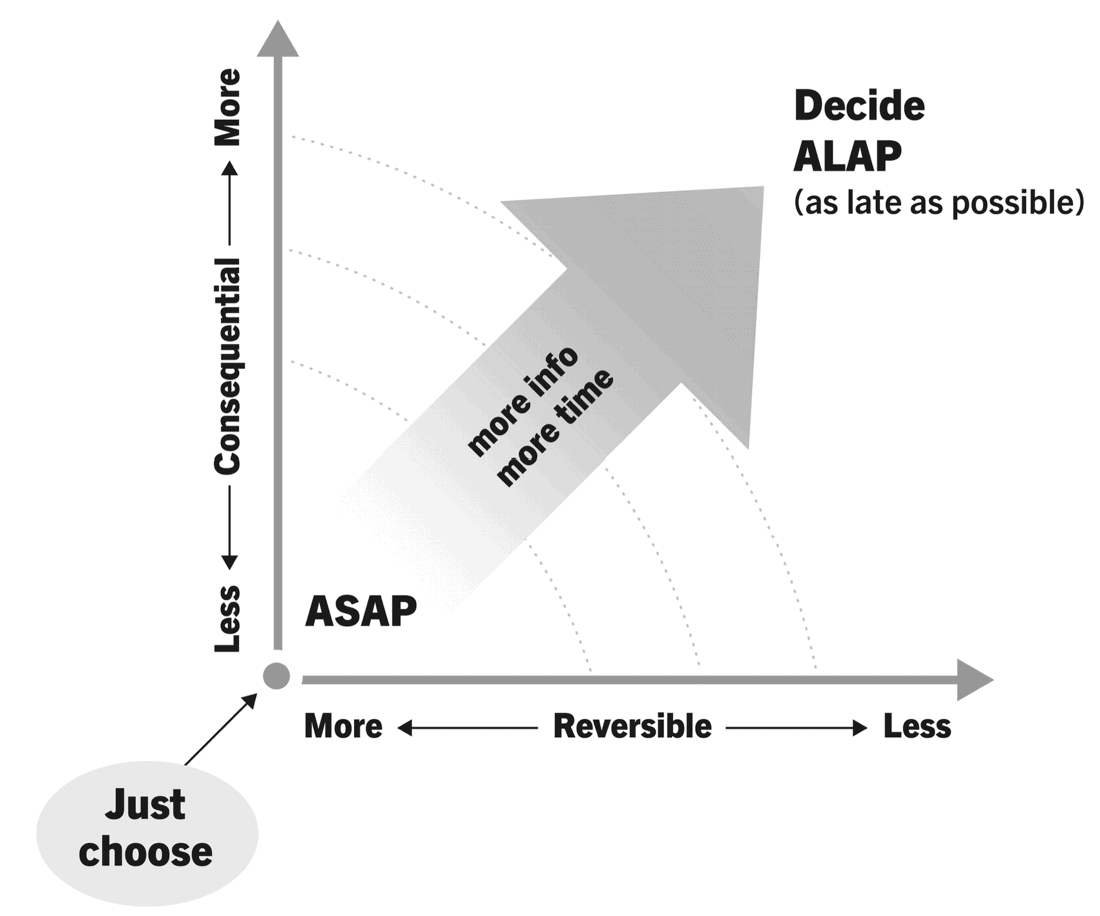
Tips & Safeguards:
Margin of safety:
· A margin of safety is a buffer between what you expect to happen and what could happen. It’s designed to save you when surprises are expensive. Building a margin of safety means giving yourself as much cushioning and coverage in the future as possible. It’s a way of preparing yourself for the widest range of possible future outcomes—and protecting yourself against the worst ones.
· Tip: The margin of safety is often sufficient when it can absorb double the worst-case scenario. So the baseline for a margin of safety is one that could withstand twice the amount of problems that would cause a crisis, or maintain twice the amount of resources needed to rebuild after a crisis.
Fail-safes:
· Set up trip wires to determine in advance what you’ll do when you hit a specific quantifiable time, amount, or circumstance.
· Use commander’s intent to empower others to act and make decisions without you.
· Tie your hands to keep your execution on track.
Step 5: Learn After
Two final principles to keep in mind when evaluating your decisions in retrospect … If you want to learn from decisions, you need to make the invisible thought process as visible and open to scrutiny as possible.
Process Principle:
- “When you evaluate a decision, focus on the process you used to make the decision and not the outcome.”
Transparency Principle:
- “Make your decision-making process as visible and open to scrutiny as possible.”
Tips & Safeguards:
· Keep a record of your thoughts at the time you make the decision: Don’t rely on your memory after the fact. Trying to recall what you knew and thought at the time you made the decision is a fool’s game.
You May Also Enjoy:
